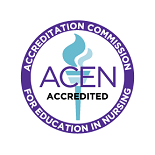Accreditation
GOCC’s Accreditation Process
In October 2014, Glen Oaks Community College received notification of the Higher Learning Commission’s (HLC) reaffirmation of the College’s accreditation. The College earned this reaffirmation under the Academic Quality Improvement Program (AQIP).
At that time, the HLC gave Glen Oaks the option to switch pathways for accreditation. Glen Oaks was given the option to stay with AQIP or to change to the Open Pathway or the Standard Pathway. The College Council made the decision to move to the Standard Pathway of accreditation.
So what does that mean? It means that the college is no longer focused on action projects and writing a systems portfolio. In its place, the college will create a living evidence file to demonstrate how the college is addressing the Five Criteria of Accreditation. This evidence file is maintained at all times and updated as needed. Institutions submit an annual Institutional Update that is reviewed by the HLC. This annual update is a by-product of the evidence file and must address any previous areas of concern noted in the latest site visit report.
The Standard Pathway follows a ten year cycle with comprehensive site visits from a peer review team in years four and ten. Similar to the site visits under the AQIP model of accreditation, these site visits are meant to ensure that the college is meeting expectations for all Criteria for Accreditation, pursuing institutional improvement and complying with federal regulations. The year ten evaluation leads to an action regarding the reaffirmation of the institution’s accreditation.
The Standard Pathway
The Standard Pathway seeks to achieve the following goals:
- To enhance institutional value by focusing on quality assurance and institutional improvement
- To reduce the reporting burden on institutions by utilizing as much information and data as possible from existing institutional processes and collecting them in electronic form as they naturally occur over time
- To enhance rigor by checking institutional data annually and conducting Comprehensive Evaluations twice during a ten-year cycle
- To integrate as much as possible all HLC processes and HLC requests for data into the reaffirmation of accreditation cycle
The Five Criteria for Accreditation
- Criterion One – Mission
- The institution’s mission is clear and articulated publicly and it guides the institution’s operations.
- Criterion Two – Integrity: Ethical and Responsible Conduct
- The institution acts with integrity and its conduct is ethical and responsible.
- Criterion Three – Teaching and Learning: Quality, Resources, and Support
- The institution provides high quality education, wherever and however its offerings are delivered.
- Criterion Four – Teaching and Learning: Evaluation and Improvement
- The institution demonstrates responsibility for the quality of its educational programs, learning environments, and support services, and it evaluates their effectiveness for student learning through processes designed to promote continuous improvement.
- Criterion Five – Resources, Planning, and Institutional Effectiveness
- The institution’s resources, structures, and processes are sufficient to fulfill its mission, improve the quality of its educational offerings, and respond to future challenges and opportunities. The institution plans for the future.
Each of the Five Criterion are broken down further into multiple core components. It is the responsibility of the institution to demonstrate that we are effectively addressing each of the criterion and the core components within. A further breakdown of the HLC’s core components can be seen on the HLC Criteria and Core Components webpage.
Program Accreditations
Associate Degree in Nursing
This program prepares you to take the NCLEX exam in the state of Michigan. Graduates who want to practice in other states should review those requirements via that Board of Nursing. For Board of Nursing requirements in other states, please see the NCSBN website.
The Associate of Science in Nursing Degree from Glen Oaks Community College is fully approved by the Michigan Board of Nursing ![]()
Letter from the Department of Licensing and Regulatory Affairs regarding accreditation ![]() .
.

The nursing program at Glen Oaks Community College located in Centreville, Michigan is accredited by the:
Accreditation Commission for Education in Nursing (ACEN)
3390 Peachtree Road NE,
Suite 1400
Atlanta, GA 30326
(404) 975-5000
The most recent accreditation decision made by the ACEN Board of Commissioners for the nursing program is initial accreditation.

Automotive Technician Certificate
- Brakes
- Electrical/Electronic Systems
- Engine Performance
- Suspension/Steering
Students in the technician program have an opportunity to complete the Maintenance and Light Repair (MLR) Certification through NATEF. By utilizing standards established by industry, NATEF examines the structure, resources and quality of training programs with the goal to improve the quality of training offered at secondary and post-secondary, public and proprietary schools. For more information, please visit the National Automotive Technician’s Education Foundation or the National Institute for Automotive Service Excellence websites.
Medical Assistant Certificate
Phone: 727-210-2350
Website:www.caahep.org.
